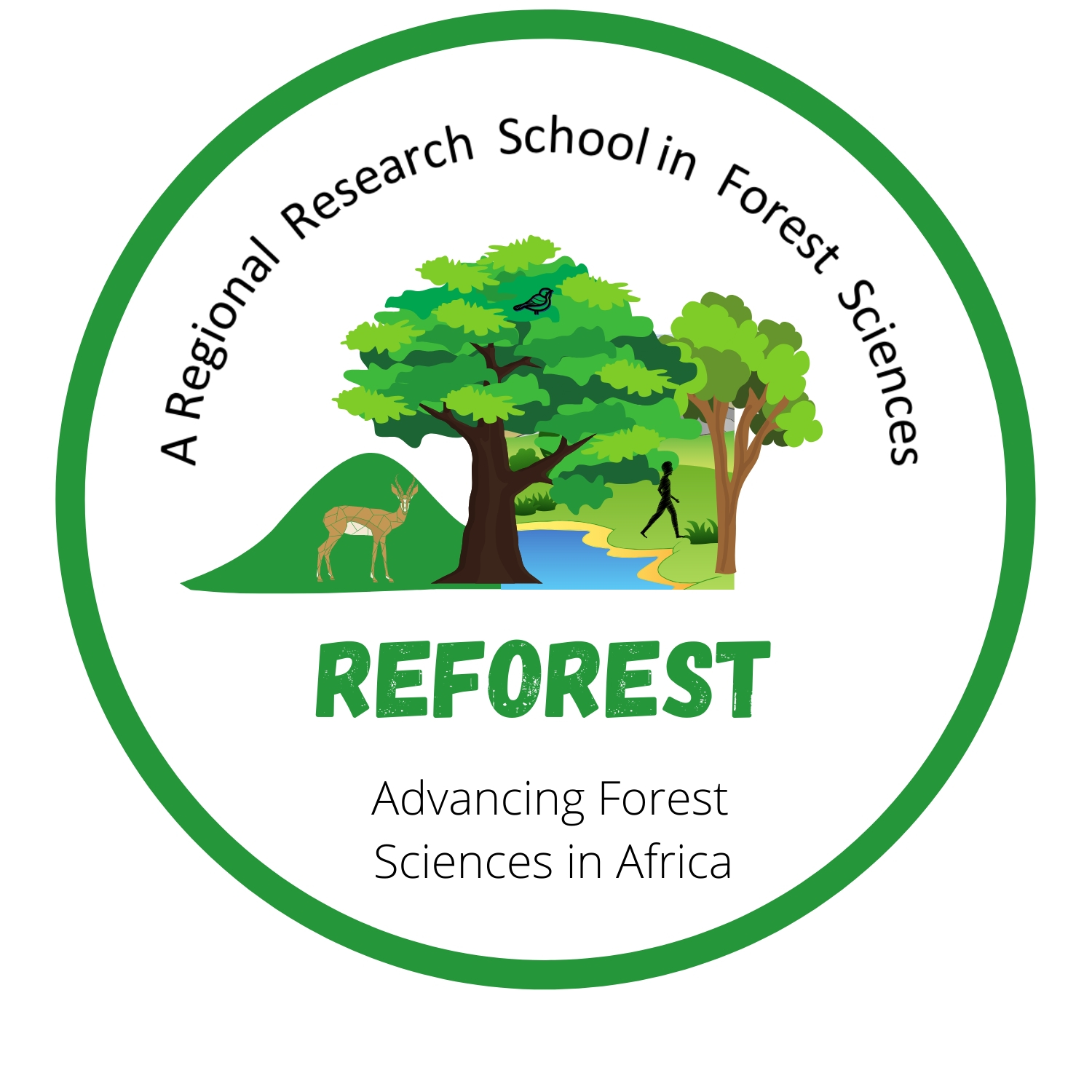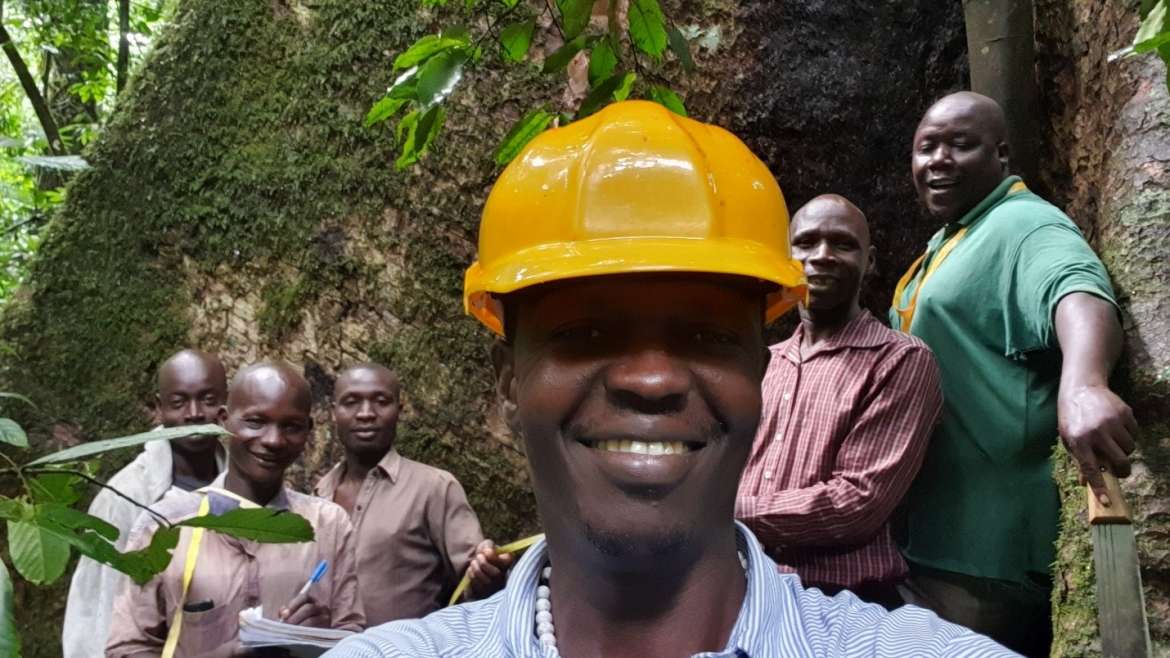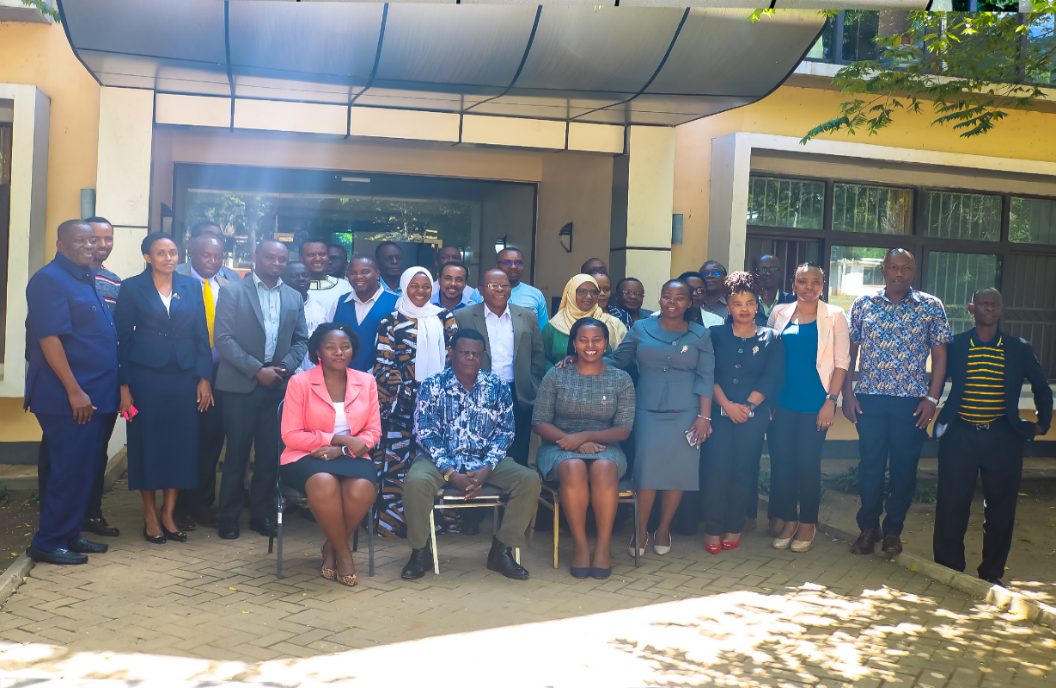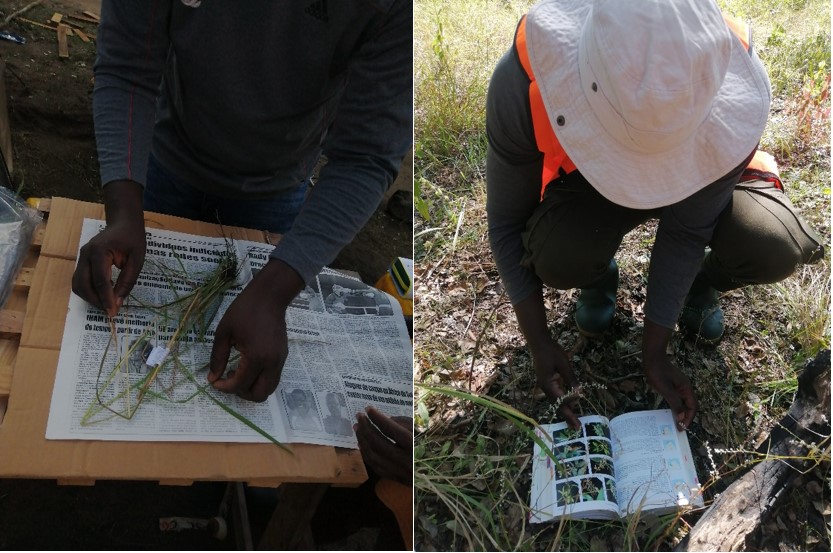By David Kissa Ocama
PhD student under REFOREST Programme at Sokoine University of Agriculture
Tropical forests have complex ecological and environmental processes that maintain functionality as habitats for biodiversity conservation and sources of ecosystem goods and services. Key among the ecosystem goods and services are timber and carbon storage. The demand for tropical hardwood at local and international markets is so high that it creates intense pressure on the natural forests resulting into over-logging of tree species of high commercial value. In Uganda, Budongo tropical forest is literally known as home to the highly valuable Mahogany tree species especially of the genus Khaya, Entandrophragma, Lovoa, Milicia and Olea. These tree species are listed as threatened for Uganda under the International Union for Conservation of Nature’s Red List. Much as selective logging was employed in the different production compartments within Budongo since 1940s, research findings have indicated suppressed regeneration of these valuable tree species and the need to understand and solve the underlying causes of their failed regeneration. Selective logging has effects on ecological processes of (seed rain-number of seeds reaching an area at a particular time, dispersal, predation and seedling recruitment) which in turn affect seed survival, seedling recruitment and tree species recovery at different spatial and temporal scales. Since 2010, the government of Uganda has imposed a ban on timber harvesting from natural forests due to high illegal timber harvesting, dwindling forest products and insufficient information on the recovery of logged natural forest areas.
My research is focusing on understanding the ecological processes of seed survival, seedling recruitment and quantifying the tree structural recovery/functional diversity within Budongo forest. Through the research, I intend to generate information that will inform policy on timber harvesting and forest management. The field work started in August 2022 with tree inventory covering varying logging gradients (1935-1960: 1961-1990: 1991-2010) of the legally selected logged and unlogged compartments. The research also involves understanding the pattern of seed rains, seed removal and predation, seedling recruitment and timber volume recovery of selected commercial tree species following logging at different temporal and spatial scales.
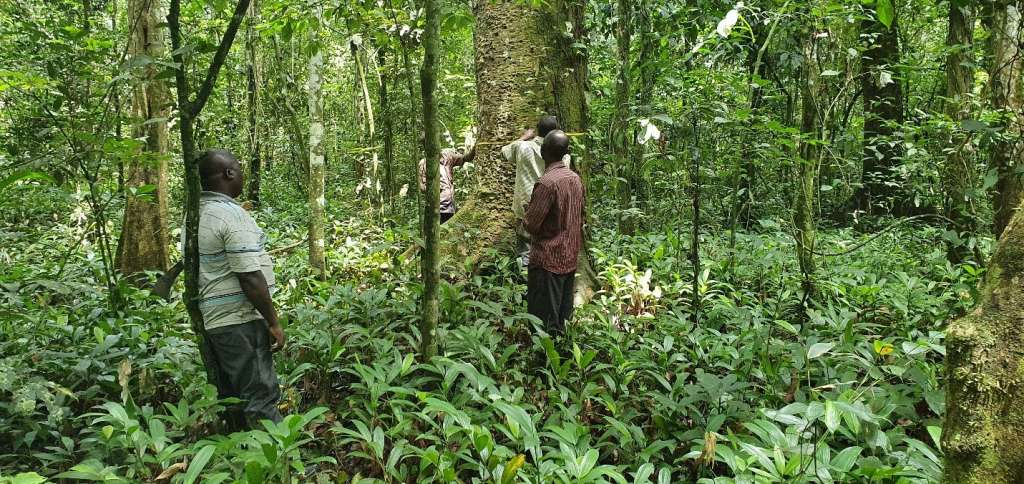
Research team measuring tree diameter and other habitat characteristics within the demarcated plots (100 m x 50 m)
Monitoring of tree seedling recruitment is currently ongoing and the findings will generate information on the abiotic and biotic factors that could be affecting the recruitment of tree species in Budongo forest because little is known about the long-term impact of selective logging on tree composition, tree structure and functional diversity.
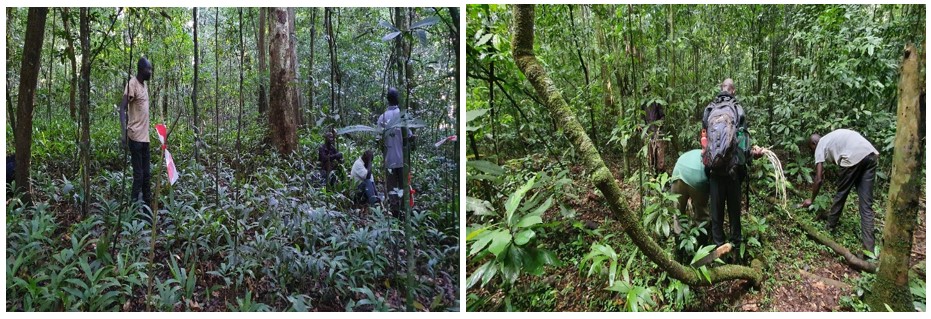
Research team assessing and tagging tree seedlings for monitoring of tree recruitments within the demarcated plots (5 m x 5 m) in the different compartments of logged and unlogged areas.
Research team training on how to collect leaf samples from tree species using the catapult method as indicated below: This research intends to analyse tree traits in order to determine tree functional composition and diversity within Budongo forest following logging.
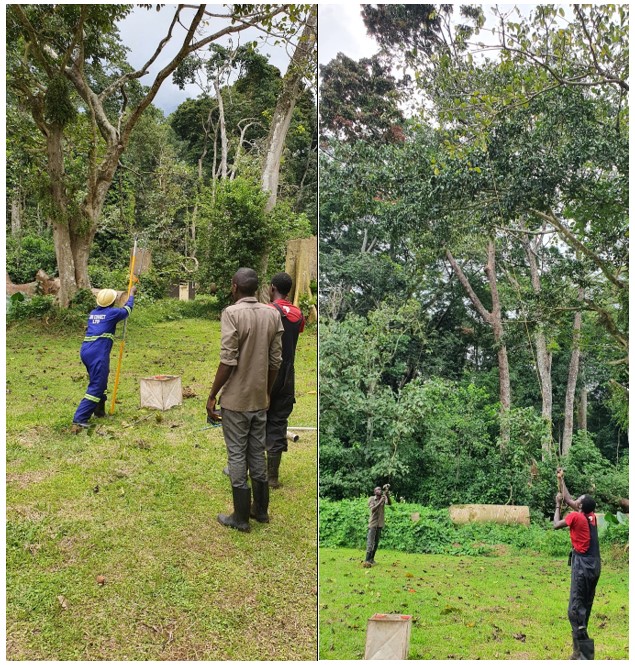
Research team training on how to collect leaf samples from high tree species for analyzing leaf traits of the different species within logged and unlogged compartments.
My PhD research will also examine differences in tree architecture of Khaya anthotheca within enriched compartment versus the naturally regenerated compartments following logging. The study will also employ carbon dating analysis to determine how tree growth is attained by different age classes of the mahogany species. This information can be used to promote enrichment planting of the species but also to determine the age-diameter class relationship of mahogany tree species in order to develop best silvicultural practices to enhance growth and productivity of the tree species.
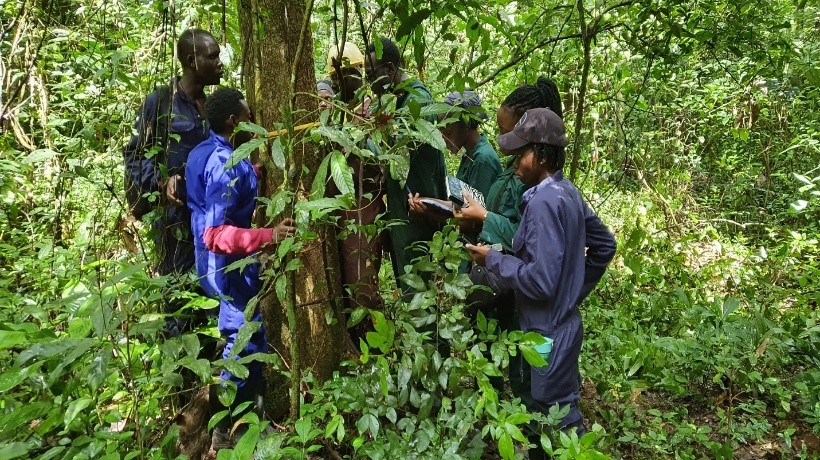
Training the interns from Makerere University on how to determine plot sizes and layout plots, conduct tree inventory and collect tree wood samples for bulk density determination and carbon dating.
My next step is to conduct seed rain experiment, seed removal experiment/predation experiment and laboratory analysis of the leaf traits, soil components in 2023.
